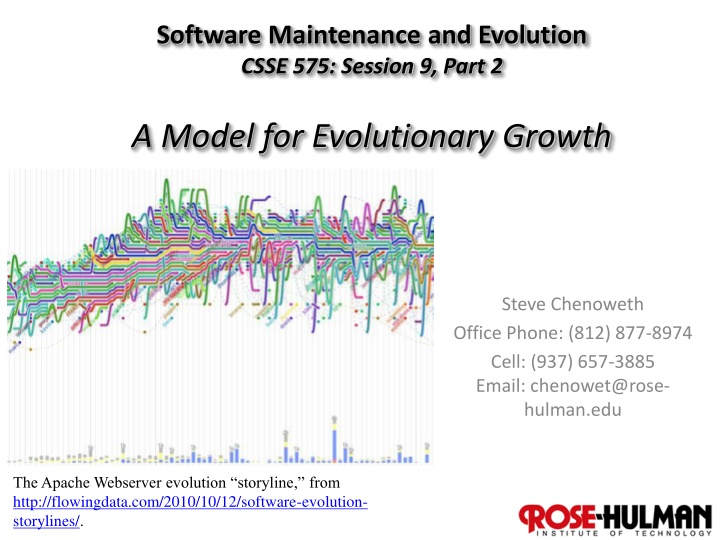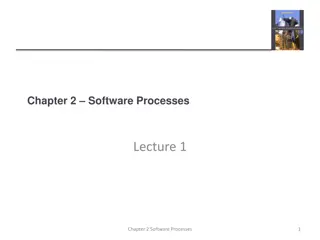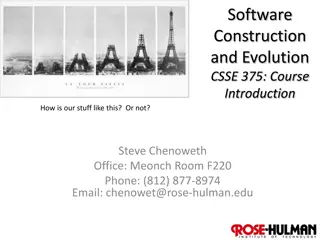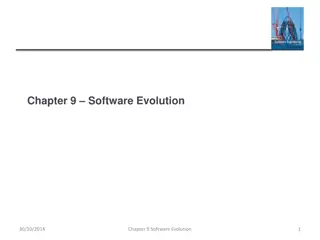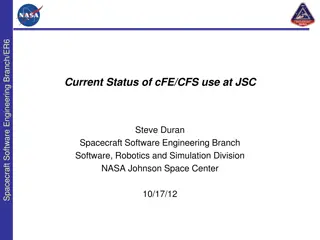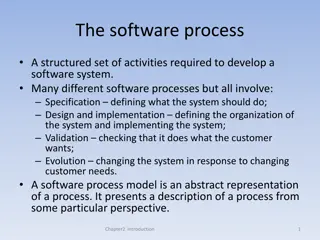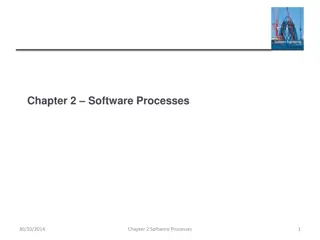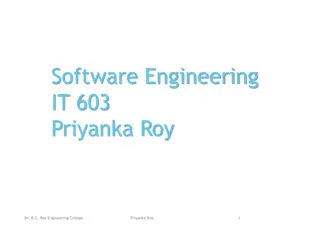Evolution of Software Development Models
The evolution of software development models from the early days of waterfall to modern approaches like Agile. Learn about the challenges of software aging, the importance of maintenance, and the concepts of reverse and re-engineering in software evolution research. Discover the different types of maintenance and the potential goals of reengineering in software systems.
Download Presentation

Please find below an Image/Link to download the presentation.
The content on the website is provided AS IS for your information and personal use only. It may not be sold, licensed, or shared on other websites without obtaining consent from the author.If you encounter any issues during the download, it is possible that the publisher has removed the file from their server.
You are allowed to download the files provided on this website for personal or commercial use, subject to the condition that they are used lawfully. All files are the property of their respective owners.
The content on the website is provided AS IS for your information and personal use only. It may not be sold, licensed, or shared on other websites without obtaining consent from the author.
E N D
Presentation Transcript
Software Maintenance and Evolution CSSE 575: Session 9, Part 2 A Model for Evolutionary Growth Steve Chenoweth Office Phone: (812) 877-8974 Cell: (937) 657-3885 Email: chenowet@rose- hulman.edu The Apache Webserver evolution storyline, from http://flowingdata.com/2010/10/12/software-evolution- storylines/. 1
In the beginning Prior to the 1970 s, the model for software development was like that of releasing any other product The main effort should be getting it out the door. The follow-on activities should be minimized These sounded like repair work. Work like the IBM OS/360 project led to the notion that software was different Maintenance and enhancement was more likely to be ongoing Above A depiction of the Big Bang, from http://scienceblogs.com/startswithabang/2010/07/the_last_great_prediction_of_t.php. 2
As a result Where once there was a waterfall, we got the spiral and iterative lifecycle models. The problems of software aging were recognized: Architecture deteriorates under the load of features originally not anticipated. Lehman started adding more laws to his model! 3
All the remedies are partial Agile development, for example: Fast initial creation of a product. Emphasis on prioritizing what s important to do next. But unclear if the overall structure will last. 4
Software evolution is A respected research area. Sub topics: What and why analyzing the inevitabilities How improved processes Where most of us live, as software developers Includes all the types of maintenance Perfective Corrective Adaptive Preventive 5
Recall the model! Reverse and re-engineering Reverse seems like the avoidable one! Can also be seen as the start of any new project. Includes how the same job is done now in analyzing requirements. Reengineering The horseshoe model describes it. Refactoring is a part of that. Visualizations (see last discussion!) can be very useful in understanding the existing system. Above a fairly fancy version of the horseshoe model, from http://learning.infocollections.com/ebook%202/Computer/Micro soft%20Technologies/General/Modernizing_Legacy_Systems/03 21118847_ch05lev1sec2.html. 6
Two possible reengineering goals Restructuring do major surgery on the existing system. E.g., rearchitect it to allow more features to be added. E.g., redesign for a new environment. Like make it SOA instead of a product installed remotely. Forward engineering build an entirely new system to replace this one. 7
Ingredients of successful evolution - 1 Incremental changes (what we do all the time) Program comprehension by the maintainers Impact analysis: Includes forecasting what a change will cost! Refactoring or restructuring often is needed. Validation and verification: Regression testing Adding tests for the new / changed features 8
Ingredients of successful evolution - 2 Large-scale changes (like restructuring or rewriting the system) need to consider these issues: Require time spent working on things that don t look like features always a show stopper. The same managers who didn t want time spent on architecture earlier, may now be shocked to hear that you re about to lose 6 months to rewrite the whole thing. Need sufficient metrics to know when the design is crumbling! Above The Fram oil filter pay me now or pay me later guys. 9
Ingredients of successful evolution - 3 Intermediate-level changes something we do periodically. E.g., search and destroy of software clones. Changing big processes, like how repositories and load lines function. Analyzing bug report histories to decide how to get rid of a bunch all at once. Above - Star Wars Episode 2: Attack of the Clones poster. 10
Software improvement We all know that improving the associated processes is important. A key part of this is detecting the problems in systematic ways. As a system grows, it needs more and more ways to look for related issues. 11
What evolves? Requirements Architecture The data that the system uses The runtime environment Increasingly, these can t be stopped to upgrade! Switching like from a product to SOA Languages and tools 12
Bastani & Bastani Sample Theory Paper - 1 SIGSOFT article by Bastani & Bastani (2007) Main ideas: Most research on evolvable systems has been in a specific domain. Can we design systems generally, that can adapt to new requirements? What s an efficient methodology for a system when we don t know the boundaries? Suggest a DNA replication process E.g., have a framework to fill in for enhancements 13
Bastani & Bastani Sample Theory Paper - 2 What do the authors mean by evolvable ? User adaptation (requirements & preferences) Environmental adaptation Includes responding to context changes dynamically System needs to accept modifications at all levels (including architectural). An Evolvable System can adapt to these. An Open System is not rigidly controlled by a central authority. 14
Bastani & Bastani Sample Theory Paper - 3 The authors describe a variety of things an open, evolvable system would have to do. They generalize these descriptions as much as possible. E.g., We believe for a system to be evolvable, it needs to be fundamentally as disintegrated as possible. I.e., it should be built through Composition versus Inheritance. 15
Bastani & Bastani Sample Theory Paper - 4 The genetic analogy comes from their conceptual requirement # 3: The operational synonymity1 of writing the software system and running it. Suggests this must be done from some roadmap a pattern or framework or style sheet. In the rest of the paper, they mine this DNA analogy. They look at what a system does rather than what it is as the key to making an evolvable system. Needs a process model. This is all, clearly, research! 1Synonymity - the semantic relation that holds between two words that can (in a given context) express the same meaning 16
Assignment and Milestone Reminders Related topics to Journal about (save for week 9 if we discuss earlier!): How often has your system needed major changes to its underlying design? What areas has this been in? Is it predictable? What are the intermediate level changes that you have made periodically? 17
